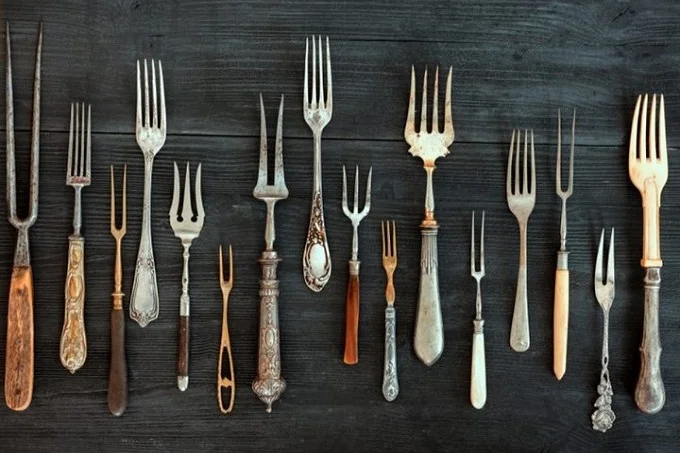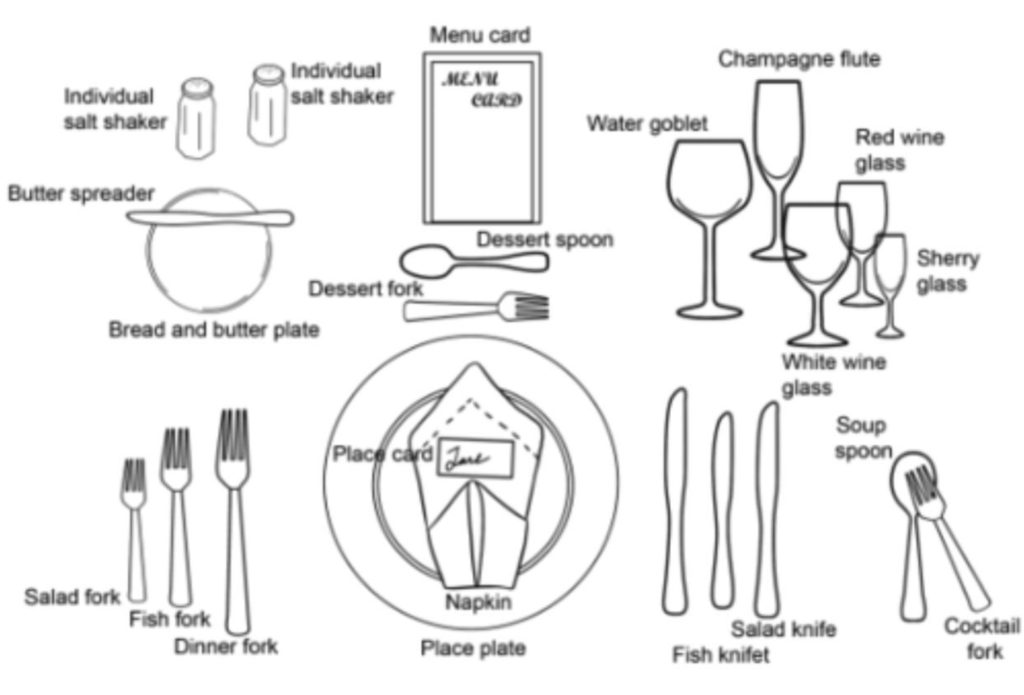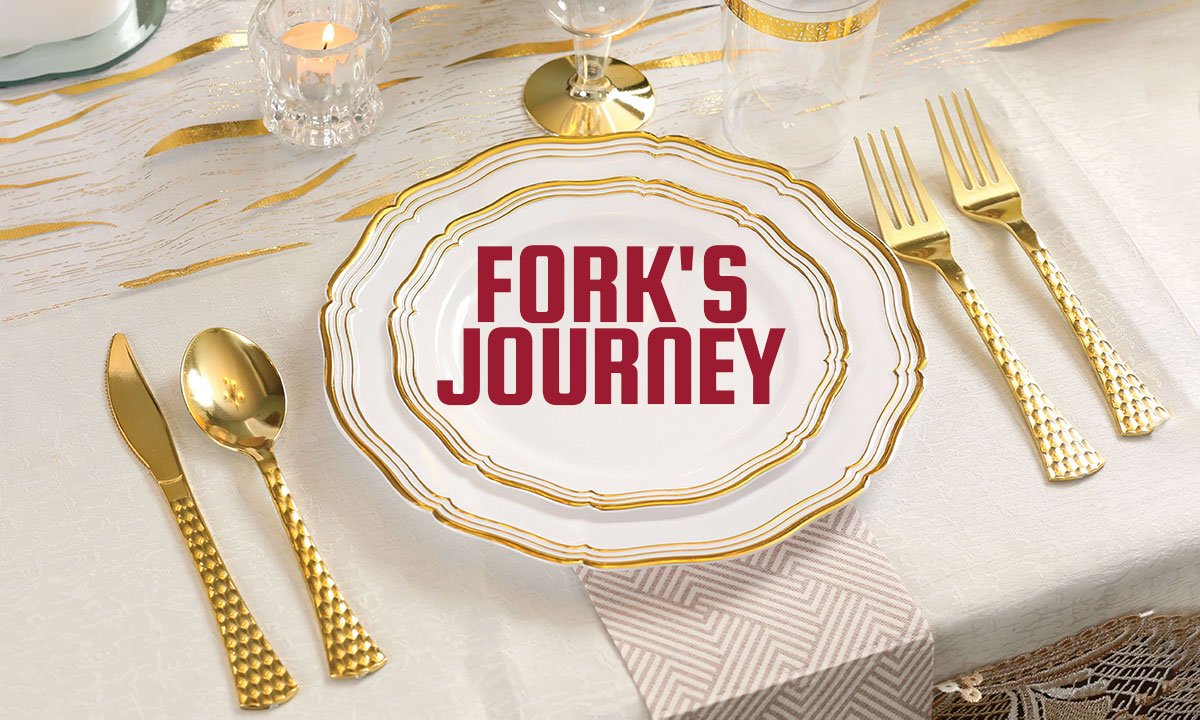From an unassuming kitchen tool to an indispensable part of modern dining, the evolution of the fork is a fascinating journey through time. In an era where dining without this essential utensil seems unimaginable, it is intriguing to trace back its humble beginnings to ancient civilizations. Unveiling its origins in China during the Bronze Age, the fork was once a simplistic two-pronged implement used for carving and lifting meat, far from its modern multi-purpose form. As we delve into its intriguing history, the evolution of this tableware staple reveals a captivating narrative of cultural exchanges, innovations, and adaptations that reshaped the culinary landscape
Table of Contents
History of Fork
There is no exact evidence of who invented the fork however from the literature we can find that the earliest records of people using forks are from China. The first forks made from bones were found by archaeologists in Gansu, a county in the north central part of China. People used these two-pronged forks during the Bronze Age (2400–1900 BC) and for a few hundred years afterwards. In Egypt, Rome, and Greece in the past, people also used forks. They are used in the kitchen to carve or lift meat, not at the table.

When Exactly Fork is used as cutlery?
Early forks had two or three straight “tines” and were only used to spear things or hold them in place while cutting. They weren’t meant to be used for scooping food. Diners in Europe used to rely on spoons and knives instead of forks, so they ate with their hands most of the time and only used a shared spoon when they had to. This made eating less clean because stews and soups were given in big bowls that everyone could use. People would dip their food into the bowls, and soon they were full of bits of other foods that people were eating. At dinner, men would wear hats and stand and doth them to greet each course as it was brought out. The tablecloth would be used as a big serviette for everyone to wipe their fingers and even their knives on.
In the 10th century, Theophanu, the wife of Emperor Otto the 2nd and a Byzantine, brought the fork to Europe. Around the 11th century, it made its way to Italy. By the 14th century, traders liked it a lot. In the early days of forks, it was common for people to have their own knife and fork made and store them in a special box called a cadena. When someone hosted a dinner party or feast, everyone would bring their own cadenas to use for eating. Then, people in Catherine de’Medici’s circle brought this custom to France.
When the “spork” was invented in the 1800s, it was an improvement on the fork. A super-useful half-fork, half-spoon tool for eating! The spork has a spoon-shaped back that can scoop food and a fork-shaped front with a few tines that can poke at food. It is useful and easy to use. People like it in fast food places and the troops. You can even find types with a sharpened edge that you can use to cut things.

Types of Modern Fork
The Salad Fork
The four-pronged fork is easy to spot because its centre tines are often strengthened. The left tine is extra-wide and can be used to cut veggies and lettuce. Salad goes on the left side of the plate, to the right of the dinner fork, if it’s served after the main meal.
The Fish Fork
A fish knife with a notch for cutting bones can be used to join this fork. There could be three or four tines on the fork. The left tine will be a little bigger than the others, and it will have a notch in it for taking out bones. There is no need for a knife if the fish is soft enough to break.
The Dinner Fork.
This is the largest fork in a set of cutlery. It has four tines that are all the same length and is used for the main dish. It’s also called the place fork because it’s often used with a knife for meat plates. There’s nothing special about this fork other than the fact that it’s the biggest one in the box.
The Dessert Fork
It’s a little smaller than a salad fork and is also known as a pastry fork or pie fork. This fork might have three or four tines. The left tine will be longer and wider than the others, and its tip will be smooth. This lets the person hold the plate with their left hand and use their left edge to cut through the dough. You can put the dessert fork on top of the dinner plate or bring it to the table when dessert is ready.
The Oyster Fork
This narrow fork has three tines and is sometimes called a seafood or cocktail fork. It can be used to handle crabs or pick up shrimp from a shrimp cocktail. It can take lobster meat out of its claws or tail, but most people use a longer even smaller lobster pick. The only fork that’s on the right side of the plate is this one.
| Fork Type | Information |
|---|---|
| Bread fork | A fork designed for serving bread from a basket or tray. |
| Carving fork | A two-pronged fork used to hold meat steady while it is being carved. Often sold with carving knives as part of a carving set. |
| Chip fork | A disposable two-pronged fork, used for eating french fries and takeaway foods, often made of sterile wood or plastic. |
| Cocktail fork | A small fork resembling a trident, used for spearing cocktail garnishes like olives. |
| Crab fork | A short, sharp, and narrow three-pronged or two-pronged fork designed to extract meat when consuming cooked crab. |
| Fondue fork | A narrow, long-shafted fork with two tines and an insulating handle, used for dipping bread into sauce in a fondue pot. |
| Ice cream fork | A long-handled fork is used for extracting pickles from a jar, having two or three narrow tines. |
| Knork | A utensil resembling a fork but with a cutting edge, combining characteristics of a knife and a fork. |
| Lemon fork | Used in the tea service for lemons, typically smaller and specialized. |
| Pastry fork | A fork designed for eating pastries, smaller than dinner forks with three tines, often having a widened leftmost tine for cutting. |
| Pickle fork | A spoon with flat tines is used for soups, similar to a spork. |
| Spaghetti fork | A novelty fork with a metal shaft and a hollow plastic handle, designed for rotating spaghetti easily. |
| Sporf | A utensil combining characteristics of a spoon, fork, and knife. |
| Spork | A utensil combining characteristics of a spoon and a fork. |
| Sucket fork | A utensil with tines at one end and a spoon at the other, used for eating items preserved in syrup. |
| Terrapin fork | A long-handled fork, sometimes with an insulating handle, is used for toasting food over coals or an open flame. |
| Toasting fork | A two-pronged fork is used to hold meat steady while it is being carved. Often sold with carving knives as part of a carving set. |
Conclusion
Through centuries of cultural exchanges and technological innovations, the fork has transcended its utilitarian origins to become an emblem of culinary refinement and social etiquette. From its modest beginnings in ancient China to its integration into European dining customs and the emergence of specialized variants for different culinary experiences, the fork’s evolution mirrors the evolution of human culinary practices. As we savor our meals today with an array of specialised forks, we pay homage to a simple yet revolutionary tool that transformed the way we dine, underscoring the profound impact of history’s humblest utensil on our modern culinary experience.

